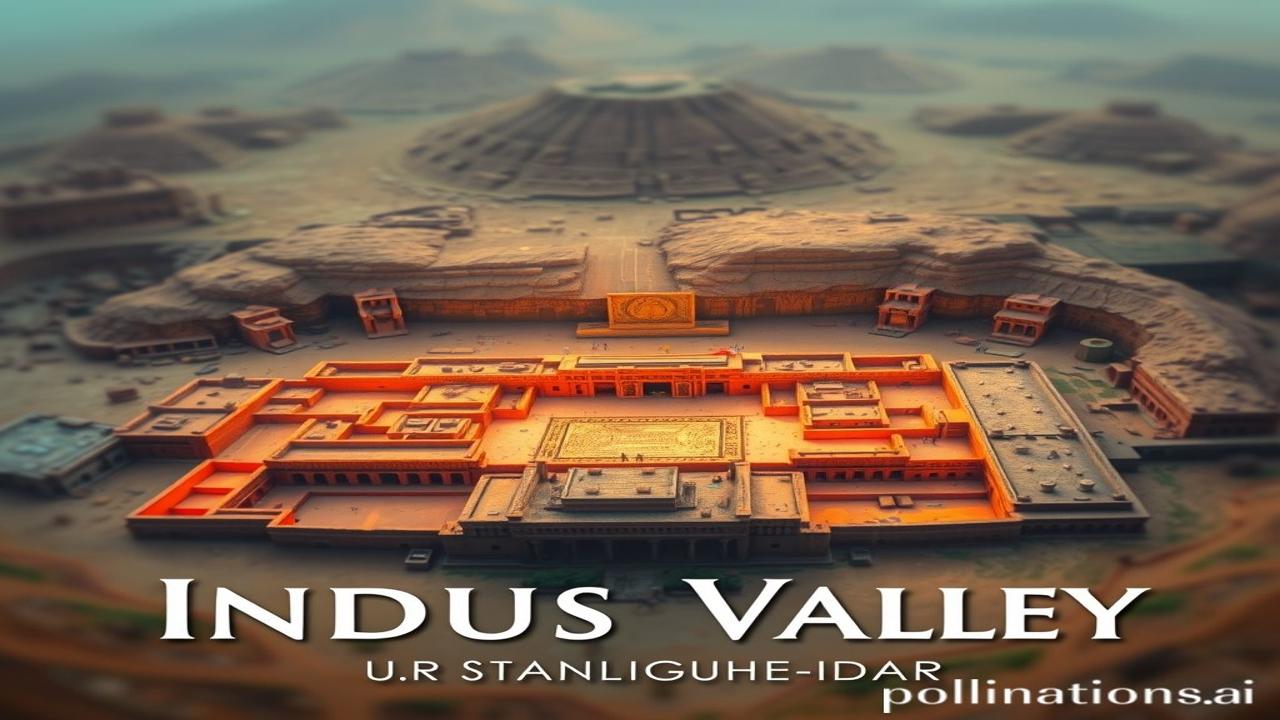Waqt Ki Dhool Mein Dabi, Sindhu Ghati Ki Dastaan: Harappa Aur Mohenjo-Daro
Kabhi socha hai, doston, agar hum waqt mein peeche jaa paayein, toh Indus Valley Civilization ke sheher kaise dikhte honge? Kya mahak aati hogi pakki hui mitti ki, ya phir nadee ke paani ki? Aao, aaj hum ek aisi yaatra par chalte hain, jahan hum explore karenge Harappa aur Mohenjo-Daro ki dastaan, jo 5000 saal pehle aabaad the aur hamare itihas ka ek mahatvapurn hissa hain.
Indus Valley Civilization: History Ki Gehrayi Mein
Indus Valley Civilization, jise Harappan Civilization bhi kaha jaata hai, ek ancient Bronze Age civilization thi. Yeh aaj ke Pakistan aur Northwest India ke hisson mein phaili hui thi, around 3300 to 1700 BCE. Is civilization ke do sabse important sheher the Harappa aur Mohenjo-Daro.
Why is it important? Well, yeh civilization apni planned cities, advanced drainage systems, aur unique art and craft ke liye jaani jaati hai. Imagine a society that valued cleanliness and organization so much, even millennia ago! Yeh civilization Bharat ki sabhyata ki foundation thi, ek foundation jis par aaj humari culture aur identity khadi hai.
Dates and names toh bahut hain, lekin let’s focus on the story. Think about the meticulous planning that went into building these cities. Each brick, each street, each well thought out. It’s truly remarkable.
Zameeni Sach: Log Aur Jeevan – Harappa Aur Mohenjo-Daro Mein
Harappa aur Mohenjo-Daro ke log kaise jeevan jeete the? Imagine kisan apne kheton mein gehoon aur jau uga rahe hain. Artisans mitti ke bartan bana rahe hain, unhe khoobsurat rangon se saja rahe hain. Traders dur-deshon se trade kar rahe hain, nayi cheezein aur ideas laa rahe hain.
“Ma Rukmini ne aaj naye kapde pehne, kyunki mandir mein utsav tha,” yeh shabdon shayad uss zamaane ki koi maa apne beti se keh rahi hogi. We don’t know about rulers or warriors explicitly, but the sheer organization of these cities suggests a strong and perhaps collaborative leadership. They valued skill, craftsmanship, and probably, a certain level of social harmony.
Picture this: Sunlight glinting off the polished bronze tools, the rhythmic clang of the potter’s wheel, children playing in the meticulously planned courtyards. This wasn’t just survival; it was a thriving society.
Dharohar Aur Pehchan: Aaj Bhi Zinda
Indus Valley Civilization ki dharohar aaj bhi humari pehchan mein zinda hai. Although the script remains undeciphered, the sophisticated urban planning reflects a deep understanding of architecture and social organization.
Think about the importance of sanitation in our society. Indus Valley ke log drainage system ke importance ko 5000 saal pehle samajh gaye the. Their commitment to cleanliness continues to inspire us to prioritize hygiene in our cities and homes. The focus on community wells and efficient water management offers lessons for modern-day sustainability.
This is Bharatiyata – the underlying thread of innovation, practicality, and community spirit that runs through our history and continues to shape our present. Indus Valley Civilization is not just a chapter in a history book; it’s a part of our collective consciousness.
Mazedaar Tathya Ya Bhram-Bhanjak: Kya Aap Jaante Hain?
Log samajhte hain ki Indus Valley Civilization ke log sirf kheti karte the, lekin asli sach yeh hai ki woh trade aur commerce mein bhi bahut aage the. Unke traders Mesopotamia aur Egypt tak jaate the, exchanging goods and ideas. Woh ek globalized world ka hissa the, millennia pehle!
Another myth? That they were simple and primitive. The reality is far from it. They were highly skilled engineers and planners. They mastered metallurgy, crafting intricate jewelry and tools. Their art, although stylized, is incredibly expressive, hinting at a rich cultural life.
Drishya Aur Bhavnaen: Ek Sensory Experience
Imagine a walk through Mohenjo-Daro. The air smells of dried earth and the faint scent of river water. The sun beats down on the brick-paved streets. The walls of the homes feel cool and smooth to the touch. The sounds of daily life – the laughter of children, the clanging of metal, the rhythmic churning of grain – fill the air.
The temples, or what we believe to be public spaces, exude a sense of reverence and community. You can almost hear the echoes of ancient rituals and celebrations. This wasn’t just a city; it was a living, breathing entity.
Antim Vichar Ya Uddharan:
Indus Valley Civilization hamein yaad dilata hai ki waqt ki dhool mein dabi kahaniyan bhi bahut kuch keh jaati hain. Yeh hamein Bharatiyata ki jadon se jode rakhta hai, aur inspire karta hai ki hum apne itihas se seekh lekar ek behtar bhavishya banayein.
“Uthho, jaago aur tab tak mat ruko jab tak lakshya prapt na ho jaye.” Like Swami Vivekananda said, let us learn from our past, embrace our potential, and strive for a brighter future, building on the foundation laid by our ancestors. The Indus Valley Civilization may be gone, but its legacy lives on in the spirit of innovation and resilience that defines India.
